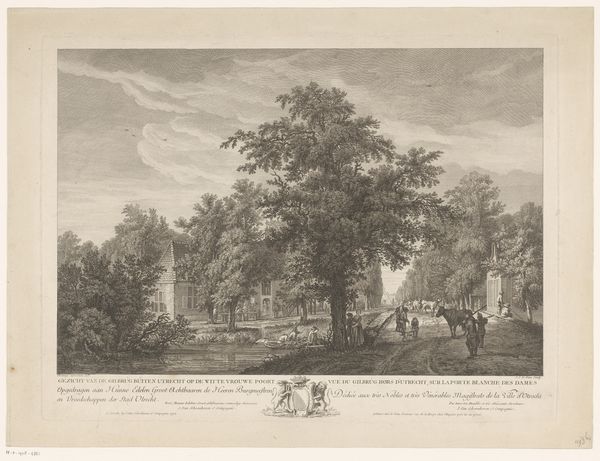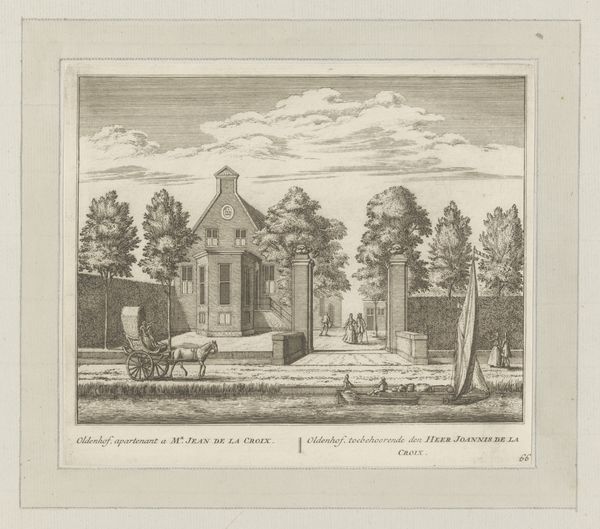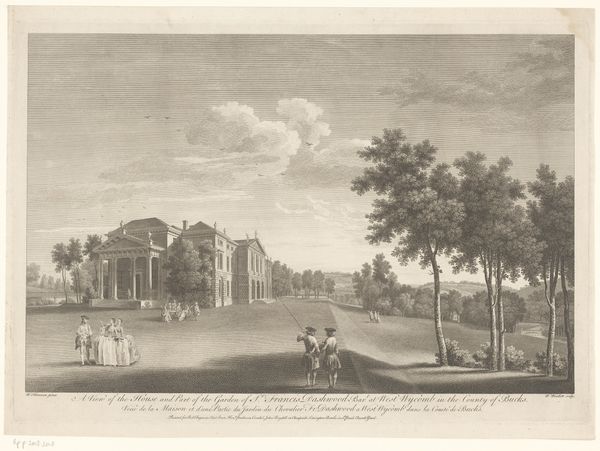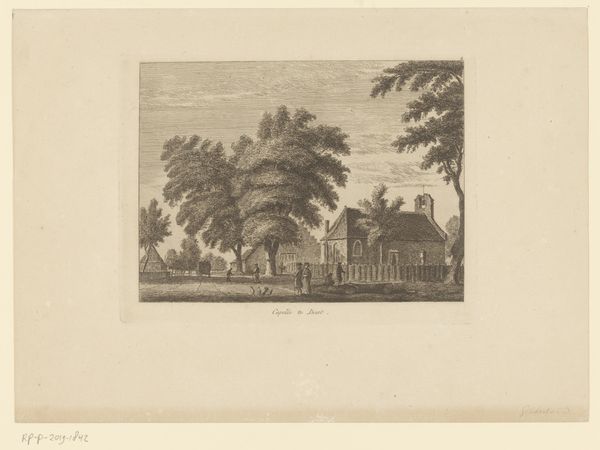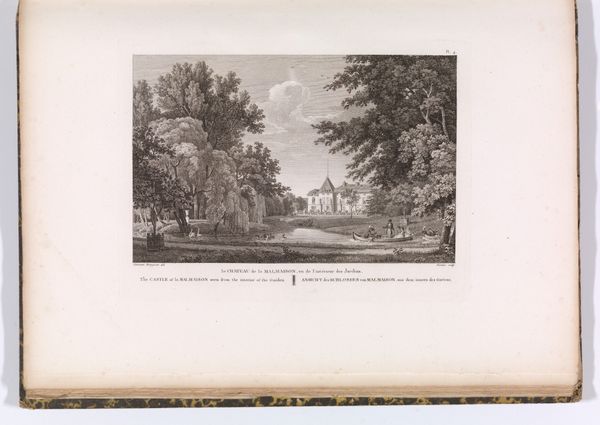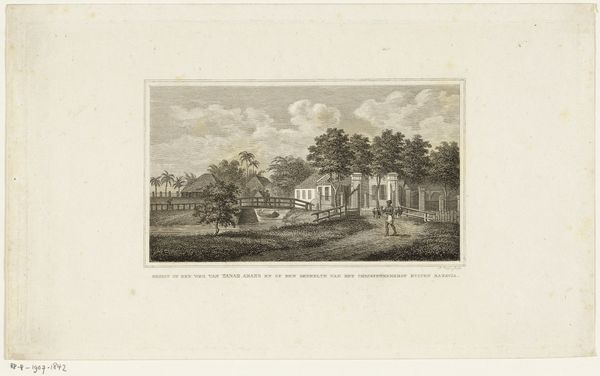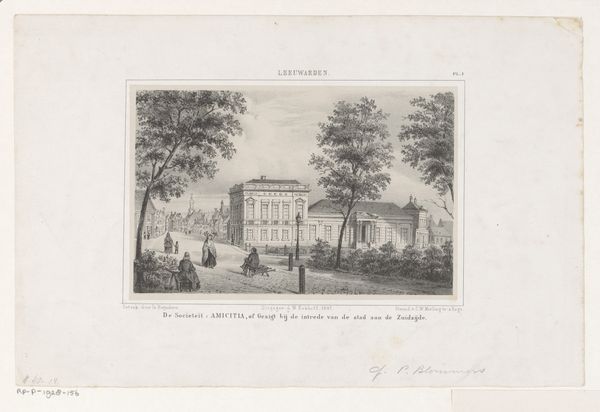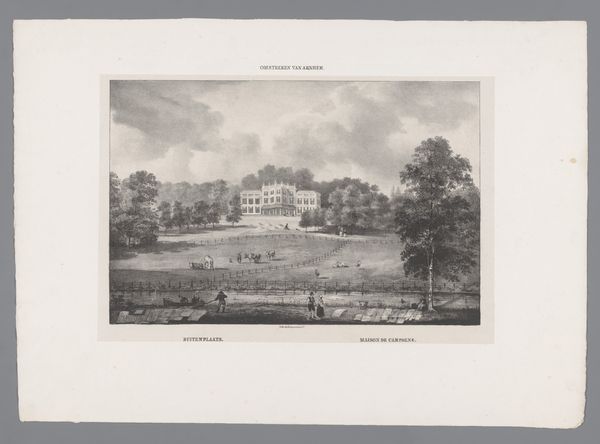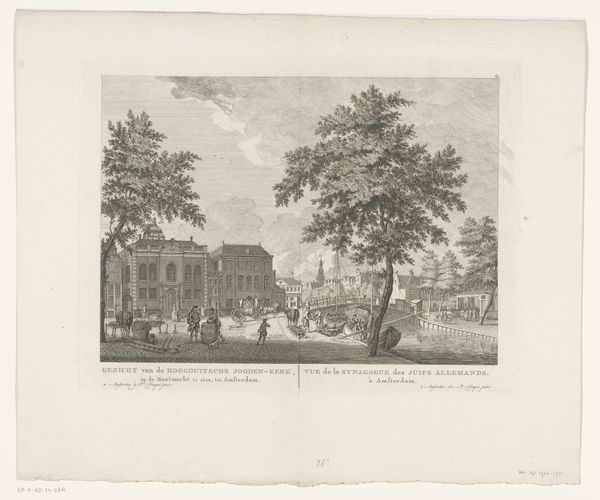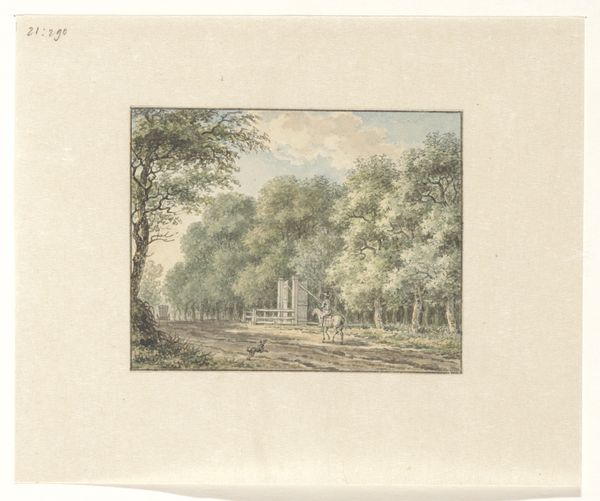
print, engraving
#
neoclacissism
# print
#
landscape
#
cityscape
#
engraving
Dimensions: height 345 mm, width 510 mm
Copyright: Rijks Museum: Open Domain
Curator: This is a print dating from about 1843 to 1845, attributed to Paulus Lauters. It's titled "Gezicht op Gereja Immanuel te Batavia", which translates to "View of the Immanuel Church in Batavia." Editor: Immediately striking. The church's architectural form dominates, but it is integrated into this muted cityscape with figures—but something feels... off. Distant, almost. Curator: Lauters offers a glimpse into the Dutch colonial presence in what is now Jakarta, Indonesia. We can see the impact and imposition of Neoclassical architectural styles representative of Dutch power at that time. Editor: Absolutely. This print makes me consider the labor involved in creating this image. It would have been reproduced multiple times. Where was it printed and consumed? The print shows a city in transformation shaped both by design and labor. Curator: Lauters, however, presents Batavia with an air of formality and calculated design, reflecting colonial intentions to assert authority through urban planning and image making. Editor: Yet that calculated composition cannot mask the figures within the cityscape, almost blending with it as an object of everyday labor. Consider the contrast between the grand scale of architecture and those rendered within the composition? It speaks volumes. Curator: True. It shows a complex and calculated approach, a reminder of how colonial narratives were visually disseminated and consumed within Europe and Batavia. Editor: Ultimately, this print speaks volumes not only about the specific place it represents, but the far-reaching mechanisms of cultural representation tied to resource exploitation and its dissemination through reproducible media. A great example of art's potential to be an historical witness. Curator: Indeed. Through Lauters's gaze, we're presented with a constructed version of a colonial city. It’s our responsibility to delve into the power structures and social implications woven into its very fabric.
Comments
No comments
Be the first to comment and join the conversation on the ultimate creative platform.
